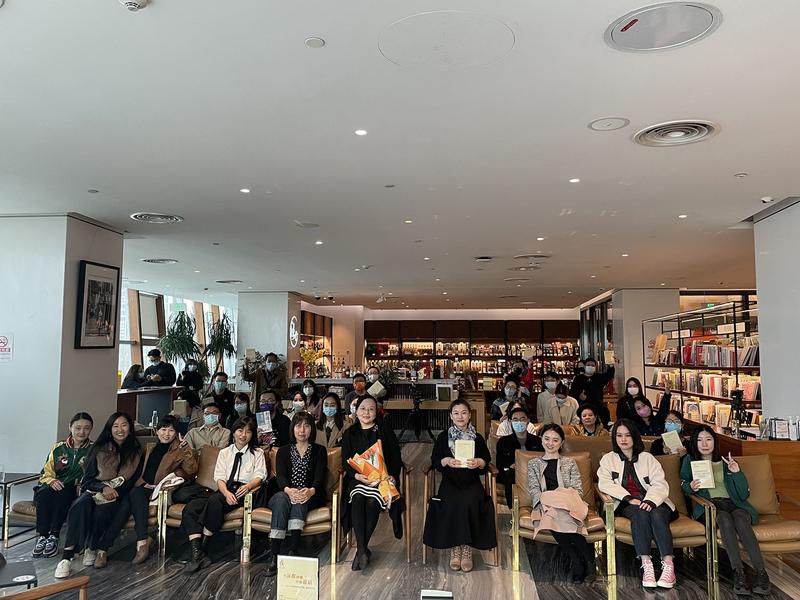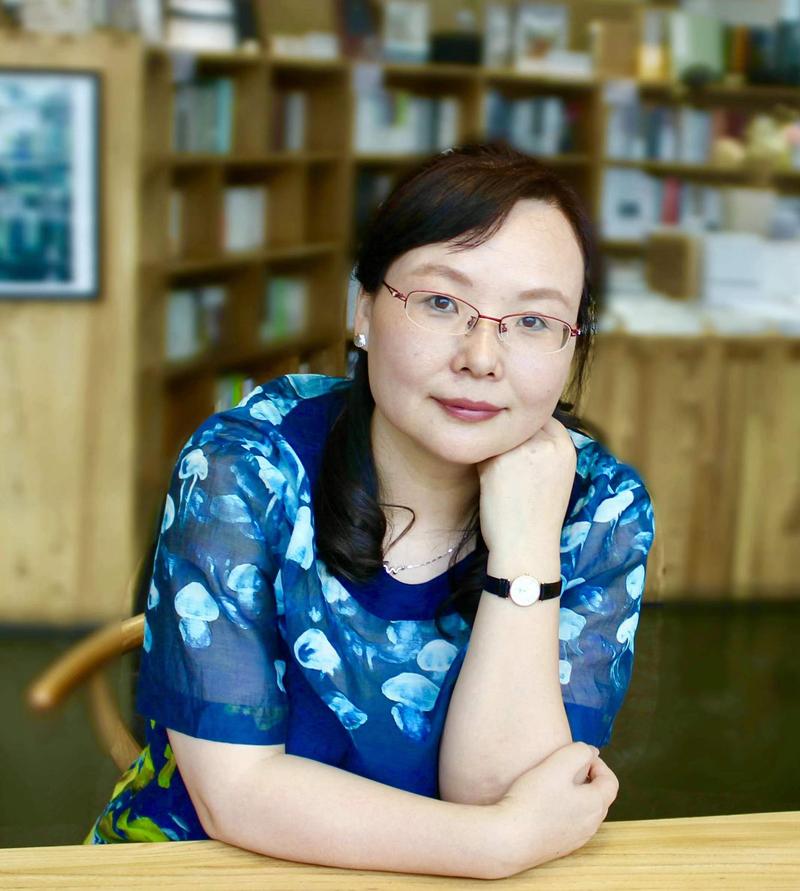April 27, 2022
BEIJING – One day last summer, Zhang Li, professor of Chinese literature from Beijing Normal University, received a message from one of her female students that immediately cheered her up.
“She sent me a photo of the book, An Anthology of Short Stories by Chinese Women in 2020, which she took at a nail salon, and said: ‘Professor, your dream has come true’,” Zhang says.
I hope the anthology can be an encouragement for young women writers, and in five to 10 years, it will offer a selection of female writers of unique dispositions.
Zhang Li, professor of Chinese literature at Beijing Normal University
It was the second annual anthology that Zhang and her students have compiled since 2019.
From hundreds of short stories published in literary magazines or online each year, they selected 20 pieces that not only best display the miscellaneous current life of Chinese women of different ages, marital status, class, region, ethnic group and profession, but can best show the achievements of the art.
“It is always my dream that the anthologies can reach more female readers from all walks of life than people like critics or academics,” she says, adding that they had an online chat group and they all cheered on seeing that photo.
Like the previous two books in 2020 and 2021, the third one, An Anthology of Short Stories by Chinese Women in 2021, also came out in March, when the society spotlighted women’s life to celebrate the International Women’s Day on March 8.
In the book’s foreword titled Illuminate the Dark Place, Zhang traces the 100-year history of women’s writing in China, stressing that the mission of women writers is to light a beacon, in not only their own life but the life of all women.

The contributors of the new anthology attend the book launch of An Anthology of Short Stories by Chinese Women in 2021 at SKP Rendez-Vous, a bookstore in Beijing, earlier this month. (PHOTO PROVIDED TO CHINA DAILY)
Throughout Chinese history, there have been far fewer women writers than men, because, most of the time, only a small number of women were allowed to receive education or were encouraged to write with a chance of being published, until the May Fourth Movement in 1919.
Like holding a fire, one by one, Zhang illuminated the memorable moments in women’s writing history over the past 100 years in the foreword.
The first key moment was on Sept 1, 1923, when a young woman named Ling Shuhua wrote a letter to her teacher Zhou Zuoren, a male writer.
She writes: “There have been so few women writers in China. That’s why the ideas and life of Chinese women have never been known to the world, which is so irresponsible to human beings. What do you think, sir? Do you also want to help women in this cause?”
With her writings, Ling later made her contribution to the cause.
“When stringing together women’s works in the past 100 years, we find they were about women’s life, the life that had been lost in time, and were reiterations of women’s spirits and stances,” Zhang writes.
“Due to their listening and writing, those women writers ‘let those invisible be visible, and those silent, heard’.”

The contributors and participants pose for a group photo at the book launch. (PHOTO PROVIDED TO CHINA DAILY)
Each year, Zhang talks about different topics in the anthology’s foreword. “This year, I want to talk about what good women’s literature is, that is, the meaning of women’s writing,” she says.
“It is to let those invisible be visible, those silent be heard, and also to let those who cannot see and hear, see and hear.”
The anthologies thus become collections of annual samples of works by Chinese women, from which readers can see how the landscape of contemporary Chinese women’s writings and their literary disposition change.
“If seen from the perspectives of anthropological and social studies, they are also the containers of the yearly samples of women’s life,” she says.
Divided into three parts according to the three themes-love, secret and beyond, the 20 short stories in the new anthology cover works created by writer of ages ranging from their 20s to 60s with varied topics, styles and genres.
In Qiji Zhinian (Year of Miracles), Dong Lai, born after 1990, tells a story about a mysterious man the male narrator encounters when he spends his annual leave in a lonely hotel in a desert. The mysterious man claims that he has an exceptional ability, with which he can bend a metal spoon with his mind. Through his telling, the story presents a crazy time when many people in China believed “masters” who claimed to own exceptional abilities.

The three anthology books Zhang Li, professor of Chinese literature at Beijing Normal University, and her students have compiled since 2019. (PHOTO PROVIDED TO CHINA DAILY)
In Banpian Bandiao (Unfinished Story), Tang Fei, 45, tells a sci-fi tale about livestreaming and plastic pollution. Through the eyes of a journalist, the story reveals the truth about a popular livestreaming cosmetics key opinion leader, better known as KOL, who lives on a remote island where many people look much younger than their real ages.
Wanchun (Late Spring) by San San, 31, tells a quaint Hitchcockian story about an old man who suspects that his second wife is poisoning his food. The narrator, the old man’s aloof son, one day receives a call from his father and goes to Hangzhou, East China’s Zhejiang province, from Beijing to help to investigate the suspected stepmother.
Kongque (Peacock) by Ye Xinyun, 30, used ingenious twists to narrate a compelling story of love and crime. A paralyzed woman meets a veteran anti-drug policeman in a blind date. Everything went smoothly until, one night, the woman tells the man how she, a beautiful dancer, became paralyzed in high school.
Besides the diverse topics, styles, and genres, readers can also see works of the same topics created by writers from different generations.

Zhang Li, professor of Chinese literature at Beijing Normal University. (PHOTO PROVIDED TO CHINA DAILY)
For example, both Tie Ning, 65, and Meng Xiaoshu, 35, talk about friendship between women in their stories Xinshi (Messenger) and Shenyou Mansui (Travel in Deep Dream).
Like in the previous two years, Zhang and her team also paid much attention to new writers.
“I hope the anthology can be an encouragement for young women writers, and in five to 10 years, it will offer a selection of female writers of unique dispositions,” Zhang says.
She emphasizes that the short stories in the book are works of art that have been widely recognized. For example, Xinshi and Kongque were both first published on Shouhuo (Harvest), a top Chinese literary magazine.
“A really good female writer is one who, without the gender identity, can inscribe her own mark in literature history. Women’s literature is about not only the gender, but also all marginalized and disadvantaged groups. And a really excellent female writer cares not just about personal issues but more about social responsibilities,” she says.


